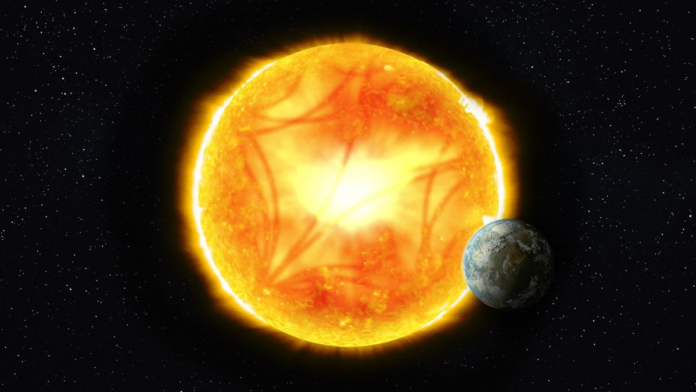Astronomers have developed a new way of measuring cosmic distances by listening to the frequencies of “music” played by vibrating stars that collectively act as a vast orchestra of different cosmic instruments.
The results could help the European Space Agency (ESA) satellite Gaia better measure the positions of about two billion stars as well as their distances from Earth and movements while building a precise, 3-dimensional map of the Milky Way .
Scientists typically use a process called parallax , the apparent shift in an object’s position when seen from two different locations, to measure the distance to various stars. They measure angles of the star itself then, using Gaia’s position in space , attempt to triangulate. The problem, however, is that the more distant a star is, the smaller the apparent displacement of parallax is. And the smaller the parallax displacement, the more likely minute systematic errors are to creep in, potentially creating bias in the measurements.
A team of researchers, including scientists from the Federal Institute of Technology Lausanne (EPFL) and the University of Bologna, has been working to eliminate those errors. In short, they developed the most precise observations ever of over 12,000 oscillating red giant stars .
Related: Gaia telescope’s new data reveals ‘goldmine’ of over 500,000 undiscovered stars and more
“We measured the Gaia biases by comparing the parallaxes reported by the satellite with parallaxes of the same stars that we determined using asteroseismology,” Saniya Khan, a researcher at the EPFL Standard Candles and Distances group who led the latest work, said in a statement.
What’s shaking Gaia?
The team’s analysis of stellar oscillations is called “asteroseismology,” and is similar to how geologists investigate Earth’s structure by tracking patterns in earthquakes .
Khan and colleagues used the vibrations and oscillations of their sample stars, which can be seen as tiny variations in light intensity, by turning them into soundwaves. In turn, they were able to detect a spectrum of associated sound frequencies. These stellar sound frequencies were then possible to convert into distance measurements.
“The frequency spectrum lets us determine how far away a star is, enabling us to obtain asteroseismic parallaxes,” Khan said. “In our study, we listened to the ‘‘music’’ of a vast number of stars — some of them 15,000 light-years away!”
The range of sounds also told the team more about the stars in their sample, helping them pick out the cosmic instruments in this celestial orchestra.
“By analyzing the frequency spectrum of stellar oscillations, we can estimate the size of a star, much like you can identify the size of a musical instrument by the kind of sound it makes — think of the difference in pitch between a violin and a cello,” Andrea Miglio, one of the study authors and a scientist at the University of Bologna’s Department of Physics and Astronomy, said in the statement.
Once the team used this method to calculate the size of a star, its brightness could be calculated as well. That brightness could further be compared to how bright the star appears to us as we stand here on Earth. This information was combined with observations that show the stars’ temperatures and chemical makeup to calculate the final distance.
This calculated distance was then used to determine parallax, which could be checked against the parallaxes obtained by Gaia during its data-gathering. It was like a large-scale check of ESA mission measurement accuracy.
“Gaia increased by a factor of 10,000 the number of stars whose parallaxes are measured thanks to a massive gain in accuracy over its predecessor, the ESA Hipparcos mission,” Richard Anderson, leader of the EPFL Standard Candles and Distances research group, said in the statement. “Asteroseismology is the only way we can check Gaia’s parallax accuracy across the full sky — that is, for both low- and high-intensity stars.”
Just like stars it studies, the future could be bright for this asteroseismology-based distance-measurement method.
“Upcoming space missions like TESS and PLATO intended to detect and survey exoplanets will employ asteroseismology and deliver the required datasets across increasingly large regions of the sky,” Khan concluded. “Methods similar to ours will therefore play a crucial role in improving Gaia’s parallax measurements, which will help us pinpoint our place in the Universe and benefit a plethora of subfields of astronomy and astrophysics .”




